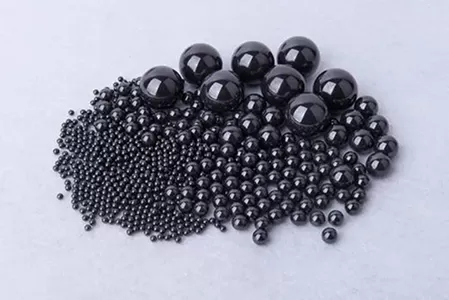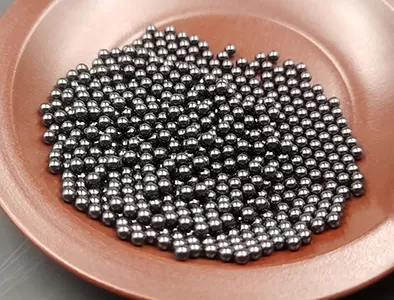Black ceramic balls are a specific type of ceramic product, typically belonging to silicon carbide or silicon nitride ceramics, with compositions mainly including silicon carbide (SiC) or silicon nitride (Si₃N₄), often mixed with additives that contribute to their black color. Their dark hue distinguishes them from other ceramic balls and is closely linked to their material composition and manufacturing processes.

Silicon carbide black ceramic balls are one common type, with silicon carbide as the primary component, usually accounting for 90% or more of their composition. The high proportion of silicon carbide gives them exceptional hardness and wear resistance. The black color in these balls often comes from impurities or additives such as carbon, which are introduced during the sintering process. These additives not only contribute to the color but also help improve the material's densification and mechanical properties. Silicon carbide black ceramic balls are widely used in harsh industrial environments, such as grinding media for hard minerals and as components in high-temperature machinery.
Another type is silicon nitride black ceramic balls, composed mainly of silicon nitride (Si₃N₄). Their black color is often a result of sintering aids like yttrium oxide or aluminum oxide, which are added in small amounts to promote densification during manufacturing. These additives react with silicon nitride at high temperatures, forming a glassy phase that binds the grains together, and their presence can influence the color of the final product. Silicon nitride black ceramic balls offer excellent thermal shock resistance and low density, making them suitable for applications in aerospace and automotive industries, such as bearings in high-speed engines.

In some cases, black ceramic balls may also be made from other ceramic materials with added pigments. For example, alumina ceramic balls can be made black by incorporating iron oxide or other dark-colored additives into the alumina matrix. However, such cases are less common, as the primary focus of alumina ceramics is usually on their wear resistance and cost-effectiveness rather than color. These black alumina ceramic balls are often used in decorative applications or in specific industrial settings where color coding is required for identification purposes.
The manufacturing process also plays a role in determining the color of ceramic balls. Sintering in a reducing atmosphere, for instance, can lead to the formation of certain compounds that darken the ceramic. This is particularly relevant for silicon carbide and silicon nitride ceramics, where controlled sintering conditions help achieve both the desired mechanical properties and the characteristic black color.
When used as packing in industrial columns, black ceramic balls, regardless of their specific type, retain the functional properties of their base ceramics. Silicon carbide black ceramic balls, with their high hardness, are effective in abrasive fluid handling, while silicon nitride ones, with their thermal stability, perform well in high-temperature packing applications.
In summary, black ceramic balls are most commonly silicon carbide or silicon nitride ceramics, with their composition centered around SiC or Si₃N₄ and modified by additives that impart the black color. Their material properties make them suitable for a range of industrial applications, combining functionality with their distinctive appearance.



